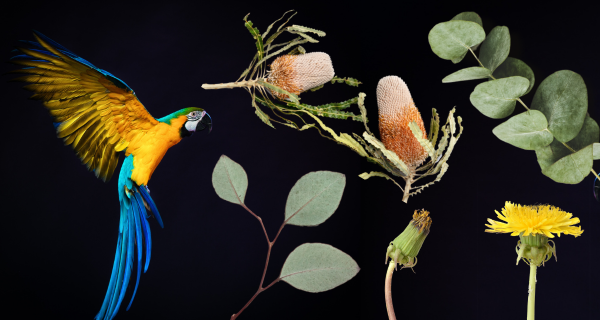
Companian Plants For Birds
If you have ever watched birds in the wild, you will find birds are always around flowering trees and shrubs. Honeyeaters love the pollen and nectar provided by native Australian flowering trees and people wanting to attract birds to their garden, should consider planting Australian native plants.
In addition to providing food for the honeyeaters, the branches and seed pods are a relished food for the Parrots. Parrots will also eat the flowers. If you want to provide an interesting environment for your captive bird, try putting in some branches with flowers and/or seed pods attached. The birds love stripping the bark off the branches and will spend hours chewing the bark and leaves. Just some of the safe Australian native plants to give birds are as follows:
1. Eucalypts
There are some 700+ species of Eucalypt with all being native to Australia. Eucalypts range in size from dwarf (1 metre tall) to full size tree (30 metres tall). Eucalypts produce flowers which provide pollen and nectar for honeyeaters and when the flowers finish, seed pods then form.

Eucalypt Seed Pods form after flowering. These are also referred to as Gum Nuts
2. Melaleuca
Melaleucas are commonly referred to as “Paperbarks”. This is because the majority of Melaleucas produce a bark which the tree sheds. This bark can be given to birds to chew and they often shred it like paper. You can also provide Melaleuca bark for nesting birds such as finches.

Melaleucas are related to Callistemons (Bottlebrush) and the Melaleucas produce a wide range of coloured flowers
3. Callistemon
Callistemon is commonly called Bottlebrush, due to the flowers looking like bottle brushes. Flowering occurs most commonly between October and December with some species flowering again in Autumn in Australia. Callistemons come in a wide range of colours.

Callistemon Flower
4. Grevillea
The flowers of Grivellea are quite small, but they occur in clusters giving an appearance of the flowers being larger than they really are.
Grevilleas flower most of the year, but late winter to mid summer is the most intense flowering period for most species.

Grevilleas can be found in a variety of colours with the most common being red and yellow
5. Banksia
Banksia is a close relative of the Protea and has 75+ species which are all found in Australia. The Banksia produces flowers which then die off and form seed pods. The branches are also relished by birds as they are soft and the birds are able to chew through them. The most common colour for Banksias is yellow/gold.

Banksia Seed Pod
6. Acacia
The Acacia is more commonly known as Wattle, which is the floral symbol of Australia. Wattle means “interfaced rods and twigs”.
There are over 1200 species of Acacia of which 954 are found only in Australia. At this point in time, horticulturists are trying to divide the Acacia species into “Acacia” which is only found in Australia and “Racosperma” which are still Wattles, but are found outside Australia. The most common country other than Australia for the Wattles is Africa.Most Acacias flower during winter, but some species will start flowering in late winter and go into mid spring.

Flowers of the Acacia Plant
7. Dandelion
Although the Dandelion (Taraxacum officinale) is not native to Australia (it is found world wide and it’s origin is not known), Australian parrots love the flowers of this herb. Even though it is thought to be a weed here in Australia, it is actually a herb.
The leaves of the Dandelion look a bit like lion’s teeth and this was shown in the old herbals stylized drawings. It was named by the French “dent de lion” and the English version became Dandelion.

Dandellion in Flowers
Dandelions can be used in many different ways. The leaves and buds can be infused to make tea and the leaves can be used in salads (they have a sharp bitter taste, which offsets the sweetness of mayonaise and/or salad dressings).
Often you will see birds such as Galahs on the side of the road eating the unopened flowers early in the morning. The flowers close at night and reopen early in the morning. The birds prefer the flowers before they are fully opened.These are just a few Australian Natives, and one non native, that are totally safe to give to birds. All parts of the plant can also be given. You will often find lerps and grubs on the underside of the leaves. Birds love these little tit-bits and these are also a source of protein. So if you want to attract birds to your garden and also provide them with a food source, plant plenty of Australian natives. They come in all shapes and sizes and some can be grown in pots for people that live in units.

Most Australian natives are tolerant of periods without water and most are frost resistant. If you want to fertilize your Australian native plants, always consult your local native nursery, as Australian natives do not like a lot of fertilizer and there are fertilizers available which are suited solely to Australian native plants.
Seeding Grasses For Our Birds
Anyone that watches birds would have noticed different species on the ground, eating seeding grass heads. This is part of a wild bird’s diet and the easy thing for birdkeepers to do, is to buy processed bird seed. Wouldn’t it be wonderful if we could all grow seeding grass heads to give fresh to our birds! In addition to providing a food source, grasses provide nesting material for birds that build nests (i.e finches).
There are many Australian native grasses that can be planted and used both for food and nest building purposes. Just a small list of these are:
Windmill Grass
(Chloris truncata)
Typical leafy grass, up to 45 cm tall, with coarse straight, linear inrolled leaves up to 14 cm long. Windmill-like flowerhead. The flowerhead is a series of up to nine spikes radiating from the end of a stalk. Spikes are up to 13 cm long, with a hairy base and quite long bristles on the spikes. Flowers from spring to autumn, but mainly in the summer.

Windmill Grass
Queensland Blue Grass
(Dichanthium sericeum)
An erect perennial, often very finely stemmed and grows to a maximum height of 30cm. It grows vigorously when conditions are suitable. It is one of the earliest grasses to shoot in the spring and flowers late August to May in Queensland. It also makes good soft hay for livestock.

Queensland Blue Grass
Swamp Foxtail Grass
(Pennisetum alopecuroides)
An unusual clumping perennial grass with narrow arching leaves and large feathery flower plumes from summer to autumn. Tolerates a wide range of soil and climatic conditions, including poorly drained soils. Ideal accent plant for rockeries, low maintenance gardens and tubs. Plumes suitable for dried arrangements. Grows in full sun to part shade.

Swamp Foxtail Seed Heads
Poa Grass (Poa australis)
This grass forms large, dense tussocks with numerous very slender leaves. The leaves are flat and grow to a maximum of 80cm long. The flowers form on a spikelet, having 3-5 flowers per stem. Seeds form after the flower has died. Flowers from November to May in Queensland.

Poa Grass
Feather Spear Grass
(Stipa elegantissima)
The Stipa family of grasses are commonly known as spear grasses due to the shape of the seeds. They are tufted perennial grasses with striking flower heads. Stipa elegantissima is the tallest and has feathery hairs on the stalks and branches.

Feather Spear Grass
Kangaroo Grass
(Themeda triandra [australis])
Tufted perennial, very variable in size and habit, growing normally from 30cm to 90 cm in height. It has blue smooth leaves. Grows on clay soils and with annual rainfall of 600-1 000 mm. Kept dominant by annual burning, from which it recovers after rain has fallen.

Kangaroo Grass
Native grasses can be difficult to grow from seed so the best approach is to buy it from plant nurseries or dig up suitable specimens from areas where there is a plentiful supply. Most native grasses grow in tufts and don’t necessarily create a wonderful lawn. However, if you don’t require the smooth green look, an open area of Australian native grasses can be a great way to tempt even more birdlife into your yard, in addition to supplying a food source and nesting materials for the visitors.


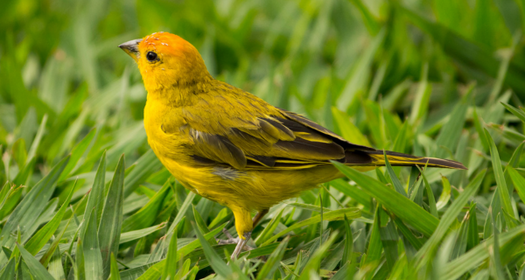
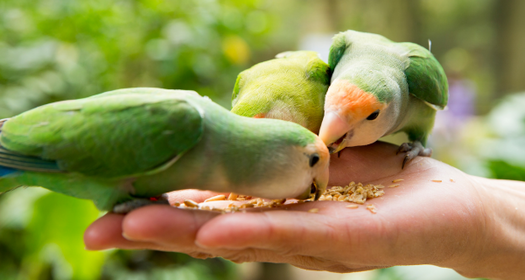
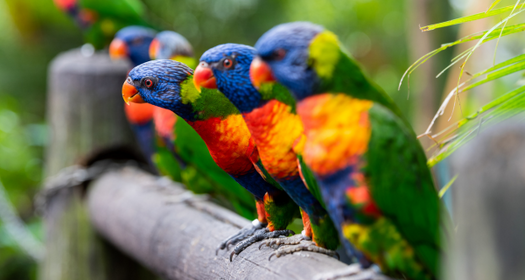
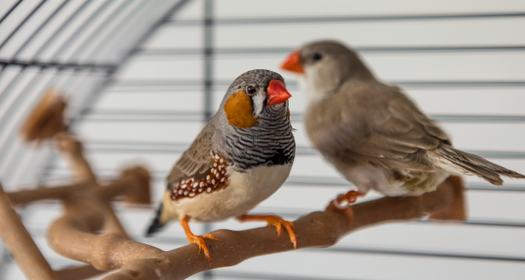
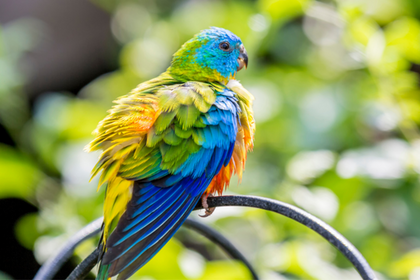




Leave Comment Below